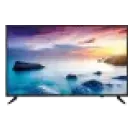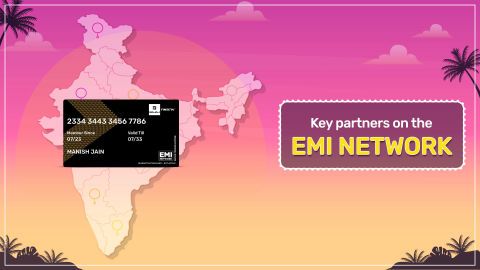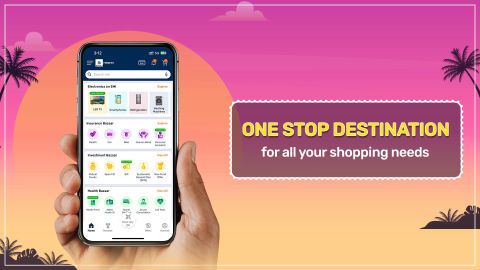For the best TV experience, check out the wide range of models available on Bajaj Mall. Head to any of Bajaj Finserv’s 1.5 lakh partner stores across 4,000 cities in India to discover a wide selection of TVs. Choose the model that best fits your needs and take advantage of zero down payment offers, making your purchase more affordable by converting the cost into Easy EMIs. You can also take a look at 4K LED TVs and choose the one that best suits your preferences and make the most of zero-down payment offers.
3 min
30-Oct-2024
OTT platforms like Netflix, Amazon Prime, and Disney+ have gained popularity for their vast content libraries and personalised viewing experiences, catering to diverse tastes. In contrast, traditional TV relies on fixed schedules and channels, often requiring cable or satellite subscriptions. As OTT services grow, they challenge the conventional TV model, reshaping entertainment consumption habits.
For the best TV experience, check out the wide range of models available on Bajaj Mall. Head to any of Bajaj Finserv’s 1.5 lakh partner stores across 4,000 cities in India to discover a wide selection of TVs. Choose the model that best fits your needs and take advantage of zero down payment offers, making your purchase more affordable by converting the cost into Easy EMIs. You can also take a look at 4K LED TVs and choose the one that best suits your preferences and make the most of zero-down payment offers.
For the best TV experience, check out the wide range of models available on Bajaj Mall. Head to any of Bajaj Finserv’s 1.5 lakh partner stores across 4,000 cities in India to discover a wide selection of TVs. Choose the model that best fits your needs and take advantage of zero down payment offers, making your purchase more affordable by converting the cost into Easy EMIs. You can also take a look at 4K LED TVs and choose the one that best suits your preferences and make the most of zero-down payment offers.
Difference between OTT services and traditional TV
OTT (Over-The-Top) services and traditional TV offer distinct viewing experiences in LED TVs. Traditional TV relies on scheduled broadcasts via cable or satellite, while OTT platforms like Netflix and Amazon Prime allow users to stream content on demand, anytime and anywhere, using an internet connection. OTT services offer a more flexible, personalised viewing experience compared to the fixed programming and channel packages offered by traditional television. As consumer preferences evolve, OTT has become a popular alternative for viewers seeking convenience and a vast content library.
On the other hand, traditional TV has its own merits, especially for live programming such as news, sports, and events. Cable and satellite TV packages often come bundled with a variety of channels, offering a diverse selection of shows, movies, and live broadcasts. However, viewers must adhere to a fixed schedule, and the presence of frequent advertisements can interrupt the experience. Traditional TV may also be more suitable for households that prefer familiar, easy-to-access entertainment without needing a strong internet connection.
Ultimately, the choice between OTT and traditional TV depends on personal viewing habits. If you prefer flexibility, binge-watching, and a wide variety of content, OTT is likely the better choice. However, if live broadcasts and ease of use are more important, traditional TV might still hold its appeal.
Key advantages of OTT platforms
- On-demand content: Viewers can watch shows and movies anytime, unlike TV's fixed schedules.
- Wide content variety: OTT platforms offer extensive libraries with genres ranging from dramas to documentaries.
- Device compatibility: OTT services can be accessed on smartphones, tablets, and smart TVs.
- Ad-free experience: Many OTT platforms offer subscription-based, ad-free viewing.
- Global access: OTT platforms offer content to viewers worldwide, unrestricted by geographic limitations.
Features of OTT vs traditional TV
| Feature | OTT services | Traditional TV |
| Content availability | On-demand, vast library | Fixed schedule, limited by channels |
| Device accessibility | Accessible on multiple devices | Requires TV set and cable/satellite |
| Advertisement frequency | Minimal ads (for premium services) | Frequent ads during programming |
| Cost | Subscription-based, various pricing tiers | Monthly subscription or cable fees |
| Geographical restrictions | Available globally with internet access | Region-based content limitations |
Choosing between OTT and TV for entertainment
When deciding between OTT platforms and traditional TV, several factors come into play, including viewing preferences, cost, and convenience. OTT platforms like Netflix, Disney+, and Amazon Prime offer unmatched flexibility, allowing users to stream content anytime, anywhere, and on a variety of devices. This makes them ideal for users seeking on-demand entertainment, with the added benefit of skipping advertisements on premium subscriptions. OTT services also provide access to global content, making it easy for viewers to explore international shows and movies.On the other hand, traditional TV has its own merits, especially for live programming such as news, sports, and events. Cable and satellite TV packages often come bundled with a variety of channels, offering a diverse selection of shows, movies, and live broadcasts. However, viewers must adhere to a fixed schedule, and the presence of frequent advertisements can interrupt the experience. Traditional TV may also be more suitable for households that prefer familiar, easy-to-access entertainment without needing a strong internet connection.
Ultimately, the choice between OTT and traditional TV depends on personal viewing habits. If you prefer flexibility, binge-watching, and a wide variety of content, OTT is likely the better choice. However, if live broadcasts and ease of use are more important, traditional TV might still hold its appeal.
Explore TVs on EMI with Bajaj Finserv
Looking to upgrade your TV for better streaming? Explore a wide range of touch screen TV features and specifications on Bajaj Mall, with Easy EMI payment options from Bajaj Finserv. You can also learn about HD vs HDR TVs and then choose which one you want to go with.Benefits of shopping with Bajaj Finserv
- Affordable pricing: Get the best deals on smart TVs that support Netflix at Bajaj Finserv partner stores.
- Easy EMIs: Spread the cost of your purchase with easy monthly instalments, allowing you to upgrade your home entertainment without financial stress.
- Zero down payment: Selected TV models are available with zero down payment, so you can get your new TV without an upfront cost.
- Wide selection: Choose from a variety of TV models, from LED to OLED, perfect for Netflix streaming.
- Special offers and cashback: Unlock exclusive offers and cashback when you shop for smart TVs with Bajaj Finserv’s financing options.
- Complimentary home delivery: Enjoy free home delivery on selected TV models, ensuring a hassle-free shopping experience.
Frequently asked questions
What are the main differences between OTT platforms and traditional TV?
The main differences between OTT platforms and traditional TV are content delivery and viewing flexibility. OTT platforms provide on-demand content accessible via the internet, while traditional TV relies on scheduled programming through cable or satellite. OTT offers a larger content library, while traditional TV is better for live broadcasts like sports and news.
Which offers more flexibility in viewing options?
OTT platforms offer more flexibility in viewing options, allowing users to watch content anytime, anywhere, on multiple devices like smartphones, tablets, and smart TVs. In contrast, traditional TV has fixed programming schedules and requires viewers to tune in at specific times, limiting when and how content can be accessed.
How do subscription costs compare between the two?
OTT services generally offer more affordable and flexible subscription plans, with various tiers based on features like ad-free viewing and HD content. Traditional TV often comes with higher costs due to bundled channel packages, cable or satellite fees, and additional equipment rentals, making OTT platforms more cost-effective for many users.
Show More
Show Less











